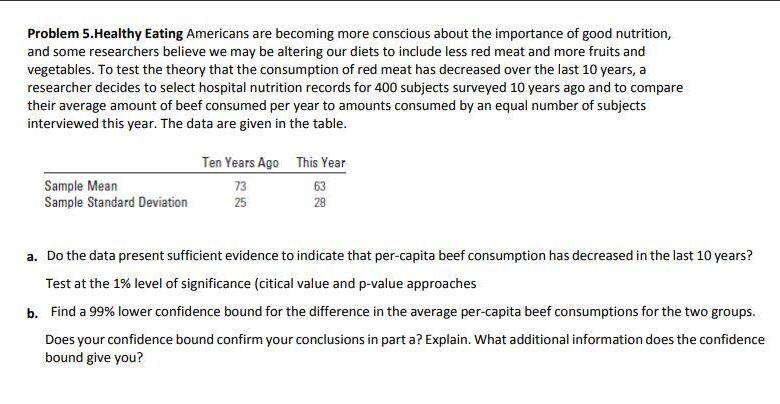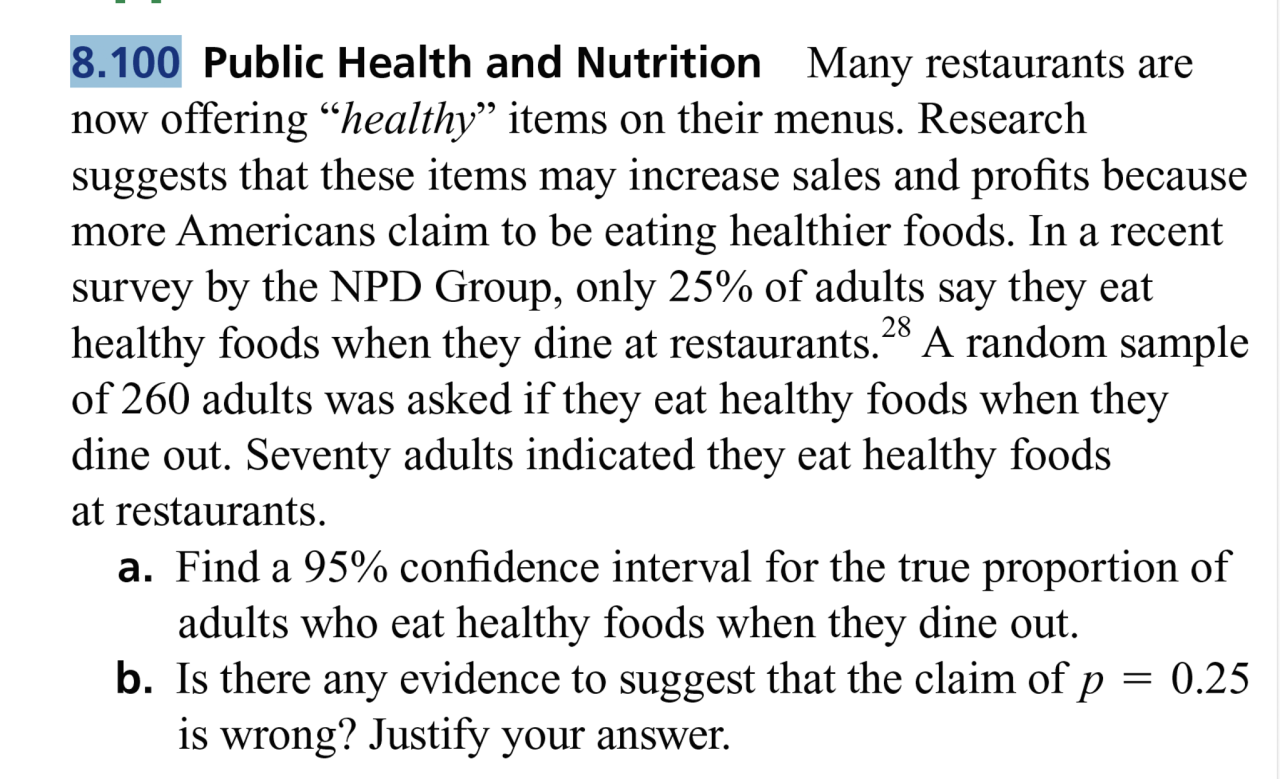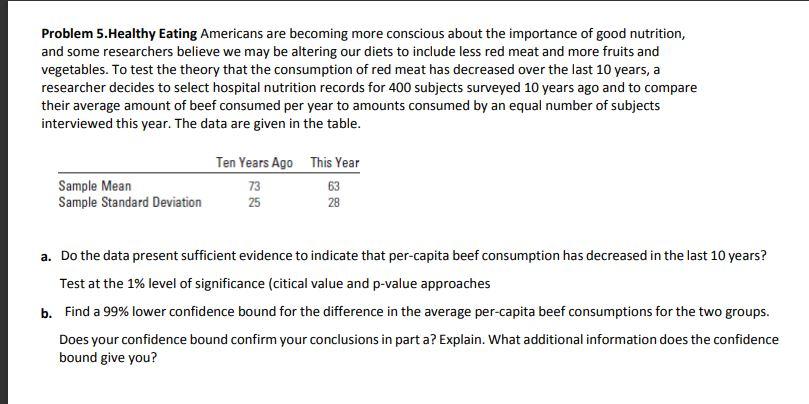
More than half of American workers struggle to make their lunch healthy. This pervasive issue stems from a complex interplay of factors, including time constraints, budget limitations, and limited access to nutritious food options. From hurried mornings to tight budgets, many find themselves making unhealthy choices that impact their overall well-being. This article delves into the root causes of this struggle, explores potential solutions, and examines the wider implications for American workers.
The problem extends beyond individual choices; it’s a multifaceted issue that encompasses economic pressures, time constraints, and a lack of education about healthy eating. This exploration will unpack these elements, providing a comprehensive understanding of the challenges and potential strategies for improvement.
Understanding the Problem
More than half of American workers face significant challenges in maintaining a healthy lunch routine. This isn’t just a matter of individual preference; it reflects a systemic issue deeply intertwined with factors like time constraints, financial limitations, and the availability of healthy food options. This pervasive problem has far-reaching consequences, impacting the health and well-being of a substantial portion of the workforce.The struggle to eat healthily during the workday is complex, stemming from a confluence of societal pressures and individual circumstances.
Time constraints, coupled with demanding schedules and long commutes, often leave little room for preparing or purchasing nutritious meals. Budget limitations further exacerbate this difficulty, making healthy, fresh produce and whole grains less accessible for many. The lack of convenient, healthy options in certain areas also contributes to the problem, creating a vicious cycle of unhealthy choices.
Time Constraints and Work Schedules
The modern American workplace often demands long hours and inflexible schedules. Many workers find themselves rushing to and from work, leaving little time for meal preparation or shopping for healthy options. The pressure to meet deadlines and attend meetings often extends beyond standard working hours, leading to limited time for planning or acquiring nutritious lunches. This can lead to relying on quick, readily available, but often less healthy, options.
Budget Limitations and Food Access
Financial constraints are a significant barrier to healthy eating. Fresh produce and whole grains can be more expensive than processed foods, fast food, or convenience items. For many workers, particularly those with lower incomes, these costlier options are simply not feasible. This economic reality often leads to the purchase of inexpensive, highly processed foods that may be high in calories and low in nutrients.
More than half of American workers are struggling to make healthy lunches, often resorting to fast food options. But what’s really in that fast food beef, fish, and chicken? Check out this article to learn about the surprising ingredients used in processed foods: whats in fast food beef fish and chicken its not always 100 meat.
Knowing the truth about what’s in those quick meals can help us make better choices and ultimately support a healthier lunch routine for everyone.
Access to grocery stores with a wide selection of healthy foods can also be limited in some communities, particularly low-income neighborhoods.
Unhealthy Lunch Choices
Common unhealthy lunch choices among American workers include fast food, packaged snacks, sugary drinks, and pre-made processed meals. These options are often high in sodium, unhealthy fats, and added sugars, contributing to potential health problems. Leftovers from the previous night, or simple sandwiches with processed meats and sugary drinks are frequently selected due to convenience and affordability.
Health Consequences of Unhealthy Lunches
The consistent consumption of unhealthy lunches can lead to various health consequences, including weight gain, increased risk of chronic diseases like heart disease and type 2 diabetes, and decreased energy levels. These consequences can have a significant impact on productivity and overall well-being in the workplace. Chronic health problems can lead to increased healthcare costs and lost workdays.
More than half of American workers are struggling to pack a healthy lunch, and it’s a real problem. It’s a tough balancing act between budget constraints and nutrition, but it’s also crucial for overall health. This lack of healthy eating habits might seem minor, but it’s closely connected to bigger health concerns. For example, did you know that a new, drug-resistant fungus is emerging as a serious threat to public health?
Check out everything you need to know about the new deadly drug resistant fungus for more details. Ultimately, prioritizing healthy lunches, alongside awareness of emerging health threats like this fungus, is key for a stronger, healthier population.
Demographic and Socioeconomic Factors
Certain demographic groups, such as low-income individuals, single parents, and individuals in rural areas, are disproportionately affected by the struggle to maintain a healthy lunch routine. These groups often face unique challenges in terms of time constraints, financial limitations, and access to healthy food options. Socioeconomic disparities contribute to variations in access to healthy food options and healthy meal preparation.
Geographic locations play a crucial role too. Rural communities might have limited access to grocery stores with a wide selection of fresh produce, while urban areas may offer a greater variety but not necessarily in affordable locations.
Exploring Solutions and Strategies

Lunchtime struggles are a pervasive issue for many American workers, impacting both their health and productivity. Addressing this problem requires a multifaceted approach that considers various strategies, from education and workplace initiatives to subsidies and access to healthy food. This exploration dives into actionable solutions and the roles of both employers and employees in fostering healthier lunch choices.A comprehensive strategy for promoting healthier lunches among workers needs to acknowledge the complex interplay of individual choices, environmental factors, and systemic issues.
By understanding these influences, effective solutions can be designed to create sustainable and impactful change.
Framework for Promoting Healthier Lunch Choices
A successful framework for promoting healthier lunch choices needs to be comprehensive and adaptable to various workplace settings. This involves a combination of strategies targeting individual behavior change, improving the workplace environment, and addressing systemic barriers to healthy food access. The framework should also incorporate regular monitoring and evaluation to track progress and adjust strategies as needed.
Different Approaches to Encouraging Healthier Lunches
Different approaches to encouraging healthier lunches can be categorized and compared based on their potential impact and feasibility. Educational campaigns, workplace initiatives, and subsidies for healthy food each have unique strengths and limitations. Understanding these nuances is crucial for developing a tailored strategy that aligns with specific workplace needs and resources.
Educational Campaigns
Educational campaigns play a vital role in raising awareness about the importance of healthy eating. These campaigns can provide clear, concise information about healthy food choices, portion control, and meal planning. For example, workshops, seminars, and online resources can equip employees with the knowledge and skills to make informed decisions about their lunch choices.
Workplace Initiatives
Workplace initiatives can create a supportive environment that encourages healthier lunch options. This includes providing access to healthy food options in the workplace cafeteria or vending machines. Consideration should also be given to implementing policies that encourage breaks and promote physical activity during the workday, including designated break areas for healthy lunches.
Subsidies for Healthy Food
Subsidies for healthy food options can incentivize employees to make healthier choices. This can include providing discounts or subsidies on healthy foods purchased through a workplace cafeteria or nearby stores. These initiatives should be carefully evaluated to ensure affordability and accessibility for all employees.
Existing Programs Aimed at Improving Worker Nutrition
Several programs and initiatives exist to support worker nutrition, reflecting a growing recognition of the link between health and productivity. These programs often include nutritional counseling, healthy food options in cafeterias, and partnerships with local farmers’ markets.
Pros and Cons of Strategies
| Strategy | Pros | Cons |
|---|---|---|
| Educational Campaigns | Increase awareness, empower employees, potentially cost-effective | May not be sufficient on its own, requires sustained effort, and might not address systemic issues |
| Workplace Initiatives | Creates supportive environment, improves access, potentially fosters community | Requires significant investment, might not be feasible for all workplaces, may not address individual preferences |
| Subsidies for Healthy Food | Incentivizes healthier choices, improves access, potentially cost-effective | Requires careful budgeting, may not be accessible for all employees, potential for misuse |
Role of Employers and Employees
Employers play a crucial role in creating a supportive environment for healthier lunches. This includes providing access to healthy food options, promoting educational initiatives, and implementing policies that encourage breaks and physical activity. Employees also have a responsibility to make informed choices about their lunch options and actively participate in programs designed to improve their nutrition.
Accessibility to Healthy Food Options Near Workplaces
The availability of healthy food options near workplaces is crucial for promoting healthy lunches. This includes encouraging the establishment of local farmers’ markets, community gardens, and grocery stores that offer affordable and nutritious options. Proximity to these options can significantly impact employee choices and encourage healthier eating habits.
Examining the Impact of Economic Factors
The economic landscape significantly impacts American workers’ ability to choose healthy lunches. Financial constraints often force trade-offs between essential needs and nutritious food, impacting overall health and well-being. This section delves into the complex interplay between economic pressures, food costs, and access to healthy options.Economic pressures exert a powerful influence on dietary choices. The high cost of living, including housing, transportation, and childcare, often leaves little disposable income for healthy food options.
This is particularly true for lower-income households where a larger portion of their income is allocated to basic necessities. Workers in these situations may prioritize affordability over nutrition, opting for less expensive, less nutritious options.
Food Prices and Affordability of Healthy Options
The price difference between healthy and less healthy lunches is a critical factor. Healthy options, such as fruits, vegetables, lean proteins, and whole grains, often command a higher price tag than processed foods, fast food, and convenience items. This price disparity creates a challenge for individuals on tight budgets, who may struggle to afford nutritious meals.
Cost Comparison of Healthy and Less Healthy Lunches
A comparison of typical healthy and less healthy lunch options reveals a substantial difference in cost. A lunch consisting of a salad with grilled chicken, fruits, and whole-grain bread will likely be more expensive than a sandwich from a fast-food restaurant or a pre-packaged meal. This difference can be even greater in areas with higher living costs.
Correlation Between Income Levels and Healthy Lunch Choices
Income levels are strongly correlated with the likelihood of making healthy lunch choices. Lower-income individuals often have limited access to fresh produce, healthy proteins, and whole grains, due to higher prices and often the lack of convenient options within their communities. Higher-income individuals, conversely, are more likely to afford healthy options and prioritize nutrition.
Impact of Food Deserts on Access to Healthy Food
Food deserts, areas with limited access to grocery stores and fresh food retailers, present a significant barrier to healthy lunch choices. In these communities, individuals often have to travel long distances or rely on convenience stores offering limited healthy options, further hindering their ability to choose nutritious food. This geographical limitation disproportionately affects low-income populations. Data from the USDA (United States Department of Agriculture) shows a strong correlation between the presence of food deserts and higher rates of diet-related diseases in affected communities.
Role of Food Insecurity on Worker Nutrition
Food insecurity, the lack of consistent access to enough food for an active, healthy life, significantly impacts worker nutrition. Individuals facing food insecurity may experience erratic eating patterns and nutrient deficiencies. This can negatively affect productivity and concentration, leading to potential health complications. Organizations like Feeding America provide valuable data on the prevalence and impact of food insecurity in the United States.
Analyzing the Influence of Time and Lifestyle: More Than Half Of American Workers Struggle To Make Their Lunch Healthy

Time constraints significantly affect American workers’ ability to prepare or purchase healthy lunches. Juggling demanding work schedules, family responsibilities, and personal commitments often leaves little time for meal planning and preparation. This pressure frequently leads to quick, less nutritious choices. This section delves into the multifaceted relationship between time, lifestyle, and healthy lunch options.The pressures of modern life create a significant obstacle to healthy lunch choices.
Long commutes, demanding work environments, and family obligations all contribute to time scarcity, making healthy lunch preparation a challenge. This difficulty often results in choosing convenience over nutrition, impacting overall health and well-being.
Impact of Time Constraints on Healthy Lunch Choices
Time constraints are a major factor in the decision-making process regarding lunch choices. Many workers face limited time for planning, shopping, and preparing a healthy lunch, leading to rushed or skipped meals. The limited time available for meal preparation forces people to opt for readily available, often less nutritious options, such as takeout or processed foods. The urgency and pressure of time often overshadow the importance of balanced nutrition.
Relationship Between Work Schedules and Healthy Lunch Choices
Work schedules directly influence lunch habits. Shift workers, for example, may find it challenging to adhere to healthy lunch routines due to irregular meal times. Employees with long commutes or inflexible schedules may struggle to incorporate healthy meal planning into their daily routine. This difficulty results in reduced access to healthy food options.
Time-Saving Strategies for Healthy Lunches, More than half of american workers struggle to make their lunch healthy
Several time-saving strategies can facilitate healthy lunch preparation. Meal prepping on the weekend can ensure a nutritious lunch is readily available throughout the week. Utilizing quick-cooking ingredients and simple recipes can significantly reduce meal preparation time. Employing convenient lunch options, such as pre-cut fruits and vegetables or pre-packaged salads, can also be helpful. These strategies allow individuals to prioritize healthy eating without sacrificing time.
Impact of Commuting Distances on Healthy Lunch Choices
Commuting distances significantly affect lunch choices. Long commutes often limit the ability to prepare a healthy lunch at home, pushing workers toward pre-packaged or takeout options. Individuals with short commutes have greater flexibility in preparing or purchasing healthy lunches. This difference highlights the practical considerations that commuting distances impose on healthy eating habits.
Comparison of Lunch Habits Among Workers with Different Lifestyles
Workers with different lifestyles adopt various lunch habits. Parents often prioritize quick and easy options for lunches, while single individuals might have more time to prepare more elaborate meals. Busy professionals often rely on takeout or pre-packaged meals. These diverse lifestyles influence lunch choices in different ways.
Importance of Convenience in Healthy Lunch Options
Convenience is a key factor in selecting healthy lunches. Pre-portioned salads, pre-cut fruits, and ready-to-eat protein options offer a healthy and convenient option. Convenience food items that prioritize nutrition are important for maintaining healthy habits. The availability of healthy, convenient options can help people maintain their healthy eating routines.
Evaluating the Role of Education and Awareness
Ignorance about healthy eating often translates into unhealthy lunch choices. Educating workers about nutritious food options is crucial for promoting well-being and productivity. A strong foundation in nutritional knowledge empowers individuals to make informed decisions, ultimately leading to improved health outcomes.Comprehensive nutritional education programs are essential in today’s fast-paced work environments. Workers often lack the time and resources to delve deeply into the intricacies of healthy eating, making readily available and accessible information vital.
It’s a real struggle for over half of American workers to pack a healthy lunch, and I’m definitely one of them sometimes! Juggling work, family, and finding time to prepare nutritious food is tough. Thankfully, resources like online meal planning tools can help, but sometimes, the issues go beyond time constraints. Recent news about the Fischer-Price sleeper toy recall, fischer price sleeper toy recalled what to know , highlights the importance of careful consideration when purchasing and using products for our kids.
All that being said, I still find myself often reaching for the same old lunch staples when I’m short on time. It’s a continuous struggle to make healthy eating a priority, especially for busy working folks.
Providing this information can have a significant impact on the overall health of the workforce.
Importance of Educating Workers About Healthy Eating Habits
Providing workers with knowledge about healthy eating habits directly translates to healthier lunch choices. This knowledge encompasses understanding portion sizes, choosing nutrient-rich foods, and making mindful food selections. Empowering workers with this understanding fosters a positive feedback loop where they take ownership of their well-being, leading to a more productive and engaged workforce.
Effectiveness of Different Educational Strategies in Promoting Healthy Lunch Choices
Various educational strategies can effectively promote healthy lunch choices. Interactive workshops, featuring hands-on cooking demonstrations and tasting sessions, can create an engaging and memorable learning experience. In addition, online resources, such as articles, videos, and downloadable guides, offer flexible and accessible learning options. Furthermore, incorporating nutrition education into existing company wellness programs creates a comprehensive and supportive approach.
Examples of Successful Educational Campaigns Related to Worker Nutrition
Several successful campaigns have highlighted the importance of nutrition in the workplace. One example involved creating a workplace “nutrition challenge” that encouraged healthy eating habits, with prizes awarded for participation. Another campaign focused on providing employees with easy-to-follow recipes for quick and healthy lunches, distributed through company newsletters and intranet platforms. These campaigns, with their tailored approaches, effectively addressed the needs of the target audience and increased awareness of healthy lunch choices.
Role of Nutritionists and Dietitians in Addressing the Issue
Nutritionists and dietitians play a crucial role in designing and implementing effective nutrition education programs. Their expertise allows them to create tailored programs that address the specific dietary needs and preferences of the workforce. They can develop personalized meal plans, offer nutritional counseling, and conduct workshops on healthy cooking methods. This specialized expertise is vital in creating a sustainable and impactful nutrition education program.
Guide for Workers on Creating Healthy and Budget-Friendly Lunches
This guide provides practical strategies for creating healthy and budget-friendly lunches:
- Plan Ahead: Planning your lunch the night before can save time and prevent impulsive, less healthy choices.
- Focus on Whole Foods: Incorporate fruits, vegetables, lean proteins, and whole grains into your lunch.
- Portion Control: Use smaller plates and bowls to manage portion sizes and avoid overeating.
- Embrace Leftovers: Prepare extra portions for dinner and enjoy them for lunch the next day. This saves money and reduces food waste.
- Budget-Friendly Options: Explore affordable, nutritious options like beans, lentils, and rice.
Making Healthy Lunches Appealing to Diverse Tastes
Catering to diverse tastes is essential for ensuring program success. Consider providing a variety of healthy options to appeal to different preferences. For instance, offer vegetarian, vegan, and gluten-free options. Furthermore, include dishes with familiar flavors, but with healthier ingredients. This approach promotes acceptance and encourages consistent participation.
Illustrating Practical Strategies
Healthy lunches are crucial for sustained energy and focus throughout the workday, yet many struggle to make them a reality. This section delves into practical strategies, from budget-friendly meal planning to making healthy eating enjoyable. We’ll explore how to prepare lunches in advance, utilize leftovers effectively, and maintain portion control, all while keeping costs down and nutrition high.Many factors contribute to the challenges of maintaining a healthy lunch routine.
Time constraints, limited kitchen access, and even the simple lack of knowledge about healthy options can all hinder progress. Fortunately, practical strategies can overcome these hurdles, allowing you to fuel your body and mind effectively.
Sample Weekly Lunch Menus
Creating a weekly lunch menu allows for strategic planning and ensures variety, which is vital for maintaining interest and avoiding boredom. Here’s a sample menu emphasizing affordability and nutritional value.
- Monday: Turkey and avocado sandwich on whole-wheat bread, a side of baby carrots and hummus. This combination provides protein, healthy fats, and fiber, all at a reasonable price.
- Tuesday: Lentil soup with a side salad. Lentil soup is a cost-effective source of protein and fiber. A simple salad provides vitamins and minerals.
- Wednesday: Hard-boiled eggs with whole-grain crackers and a small fruit salad. Eggs are a great source of protein and can be prepared ahead of time.
- Thursday: Leftover chicken stir-fry with brown rice. This is a great way to utilize leftover dinner and ensures a balanced meal.
- Friday: Tuna salad sandwich on whole-wheat bread with a side of grapes and a small portion of popcorn. This offers a light yet satisfying option.
Nutritional Value and Cost Comparison
A clear understanding of the nutritional value and cost of different lunch options is key to making informed choices.
| Lunch Option | Calories | Protein (g) | Fat (g) | Cost ($) |
|---|---|---|---|---|
| Turkey & Avocado Sandwich (whole wheat) | 450 | 25 | 15 | 4.00 |
| Lentil Soup with Salad | 300 | 18 | 8 | 3.50 |
| Hard-boiled Eggs with Crackers & Fruit | 280 | 12 | 10 | 3.00 |
| Leftover Chicken Stir-Fry (brown rice) | 420 | 20 | 12 | 5.00 |
| Tuna Salad Sandwich (whole wheat) | 350 | 20 | 10 | 3.25 |
This table provides a concise overview of common lunch options and their nutritional profiles. Comparing calories, protein, fat, and cost helps in making informed decisions.
Preparing Lunches in Advance
Preparing lunches in advance is a crucial time-saving strategy.
- Cook extra portions of healthy meals like soups, stews, or grains on the weekend and store them in airtight containers for the week. This allows for quick and easy reheating during the week.
- Prepare components like chopped vegetables, hard-boiled eggs, or pre-cut fruits. This minimizes the time spent assembling your lunch on busy mornings.
- Utilize meal prep containers to portion and organize your lunches effectively. This makes it easier to manage your meals.
Utilizing Leftovers
Leftovers offer a cost-effective and convenient way to create healthy lunches.
- Plan ahead to use leftovers from dinner as part of your lunch.
- Be creative in incorporating leftover components into a new lunch combination. For example, leftover roasted vegetables can be combined with quinoa or brown rice for a balanced and nutritious meal.
Portion Control
Maintaining portion control is crucial for managing calorie intake and weight management.
- Use smaller plates and bowls to visually control portions.
- Be mindful of your hunger cues and eat slowly. This allows your body to register fullness signals more effectively.
Making Healthy Lunches Appealing
Making healthy lunches visually appealing can make them more enjoyable.
- Use colorful vegetables to enhance the aesthetic appeal of your lunch.
- Add fresh herbs to boost flavor and visual interest.
- Use attractive containers to make your lunch more inviting.
Final Review
In conclusion, the struggle of American workers to maintain a healthy lunch routine highlights the need for a multifaceted approach. From providing more accessible healthy options near workplaces to offering educational resources and support, employers and employees can work together to combat this widespread issue. By addressing the economic, time-related, and educational factors, we can empower workers to make healthier choices that benefit their well-being and productivity.
Ultimately, promoting healthy lunches is crucial for fostering a healthier and more productive workforce.





